
From AI-powered site design to water management platforms helping utilities to better visualise their water, here are some of the AI solutions looking to improve how we manage our water.
The water sector is littered with buzzwords and phrases: Circular economy, net-zero, PFAS, water positive, zero liquid discharge and so on.
However, one phrase that manages to capture the excitement (and perhaps scepticism) of the whole sector is artificial intelligence (AI).
AI has long been touted to take the water sector by storm offering tomorrow's solutions today with the promise of automation, machine learning, digital twins, and of course the future.
But can it deliver on such high expectations and convince a famously cautious industry to take a leap of faith and embrace the technology of tomorrow?
In our latest TECH DIVE, we look beyond the hype and answer the questions of what AI actually is? How does it work? What can it offer? And take a look at the companies and start-ups bloodying their noses as they aim to be the first through the wall.
According to IBM, AI can be defined as leveraging computers and machines to mimic the problem-solving and decision-making capabilities of the human mind.
Indeed AI has fast become integrated into modern society that we forget it is even in our lives even though most of us use it every day.
Examples of AI include smart assistants such as Amazon's Alexa, Apple's Siri, and Google's Echo. When Netflix or Disney Plus recommends a show, that's AI helping you based on consumption data.
Today, maps and navigation, facial detection and recognition, text editors and autocorrect all use AI. Yet, the idea of artificial intelligence is not as modern as you might think. The idea of inanimate objects coming to life as intelligent beings have been around for centuries.
The ancient Greeks had myths about robots, while the Chinese and Egyptian engineers built automatons to give life to their Gods.
Fast forward to the 1950s and the modern definition of AI can of course be traced to the Alan Turing - often referred to as the father of computer science.
His famous Turing test, where a human interrogator would try to distinguish between a computer and human text response, is one of the earliest theories of true AI as we know it today.
Six years later, in 1956, and the term "artificial intelligence" was coined under the field of AI at a conference at Dartmouth College, in Hanover, New Hampshire.
There are four types of artificial intelligence: reactive machines, limited memory, theory of mind and self-awareness.
Reactive machines are the most basic types of AI systems. These are purely reactive and cannot form memories or draw on past experiences to inform current decisions.
Deep Blue, IBM’s chess-playing supercomputer, which beat international grandmaster Garry Kasparov in the late 1990s, is the perfect example of this type of machine.
Limited memory machines look into the past. Self-driving cars are a good example of thi,s as they observe other cars’ speed and direction. This cannot be done in just one moment, but instead requires identifying specific objects and monitoring them over time.
The next type of AI is where things start to get theoretical and rely on future developments.
Theory of mind AI will be able to class not only form representations about the world but also about other entities in the world. In psychology, this is called the “theory of mind” – the understanding that people and objects in the world can have thoughts and emotions that affect their behaviour.
And finally, we have the equivalent of HAL 9000, the fictional AI character and main protagonist in Arthur C. Clarke’s Space Odyssey series. This is when AI systems will be able to form representations about themselves. Researchers will need to not only understand consciousness but build machines that have it.
Simply put, AI systems work by combining large sets of data with intelligent, iterative processing algorithms to learn from patterns and features in the data that they analyse.
Each time an AI system runs a round of data processing, it tests and measures its performance and develops additional expertise.
In truth, AI comes down to data and a computer's ability to interpret that data into meaningful insight that can be utilised.
“To understand how AI works, you need to not look at it as a single entity but rather as a science.”
Another phrase commonly used alongside AI is Machine learning. This is the process of using mathematical models of data to help a computer learn without direct instruction.
To truly understand how AI works, you need to not look at it as a single entity but rather as a science that will combine several approaches that can simulate human thinking.
So, while AI has conquered chess and figured out what song to play next, how can it help the water sector?
AI has been on the cusp of wider adoption into the water sector for years. With the ability to process large quantities of data, monitor, learn and provide predictive solutions, it lends itself perfectly to water and wastewater management.
Take for example a water utility that serves 2.5 million people that wanted to check the condition and water flow in an old section of the underground pipe network.
It would gather a team and send them to manually check the pipe and water flow. This could involve long-distance travel, hauling of specific equipment, using a difficult or dangerous access point, or they might turn up and not even be able to check the pipe at all.
Now AI is promising to improve this process by getting rid of it entirely. Instead, an AI system would be in place constantly checking the flow rates of water coming in and out, assessing the condition of the pipe network and providing instant reports on the whole water system for this utility. This would be happening 24 hours a day, seven days a week.
Nor is it just checking water flows that AI is offering a solution. AI can also help us to build the perfect water hubs and treatment plants in a layout we could not even think of thinking of. AI is offering the water sector simplicity, predictive solutions, early warning systems, new designs and optimised water systems.
There is a stereotype from both inside and outside that the water sector has been, and is, slow to adopt new technologies.
A prime example of the water sector being slow to integrate new technologies is ceramic membranes.
“We are a minimum of 20-30 years behind almost every other major industry when it comes to AI adoption.”
The technology was developed in the 90s but face massive criticism and scepticism from the sector. It is only 30 years later that we are starting to see utilities and industrial companies move away from Polymeric membranes and to ceramic membranes.
"We are so far behind the times, we are a minimum of 20-30 years behind almost every other major industry when it comes to AI adoption," says Adam Tank, chief customer officer at Transcend, a US-based software company that recently attracted investment.
"Water needs to be more expensive. It needs to be more valued generally, and financially more valued,” he adds.
Other potential barriers to AI's integration into the water sector include costs, lack of strategy, minimal case studies, regulations, cyber security and the big one, risk.
"The water industry, at least the municipal side, like anything that is regulated is probably one of the most risk-averse industries. Everything is driven by decisions to mitigate risk," says Tank.
"We have to start small and think about how this technology can help reduce risk across the sector. Often, when technology companies go to sell their tool or solution, it's about the potential financial reward rather than helping to manage risk.
"It's on us to change: we need to change the language we are using and talk about mitigating risk," Tank adds.
While there may be barriers standing in the way of AI, some companies are not letting them stand in their way.
From AI-powered site design to water management platforms helping utilities to better visualise their water, here are some of the AI solutions looking to improve how we manage our water:
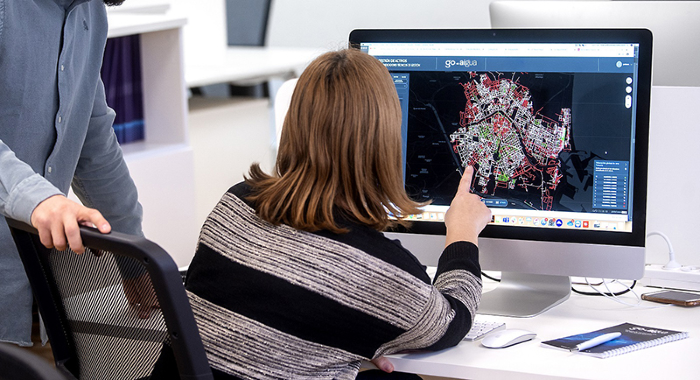
In 2018, GoAigua was born as a dedicated company in the digital transformation space looking to bring digital solutions to the water sector. The company came about as a result of the successful digital transformation process at the utility Global Omnium, during which the GoAigua platform was developed.
After gaining some significant ground, this sparked the formation of the Spanish smart water company, Idrica, in early 2020, with a founding team of 180 experts.
The GoAigua platform brings together process and infrastructure information through its Smart Water Engine, which collects, processes and standardises data to provide solutions for the entire water cycle, and a central BI dashboard for visualizing indicators.
“I’d like to see whether prediction systems can be added into AI water storm overflow predictions.”
Speaking to Aquatech Online Elisa Fenu, a data scientist at Idrica, said: "We use AI in GoAigua for inferring consumption patterns for specific cities or areas to cluster them in order to predict the specific water needs of that population.
"We also have a system called water quality prediction for water treatment plants allowing them to better control and adjust it earlier.
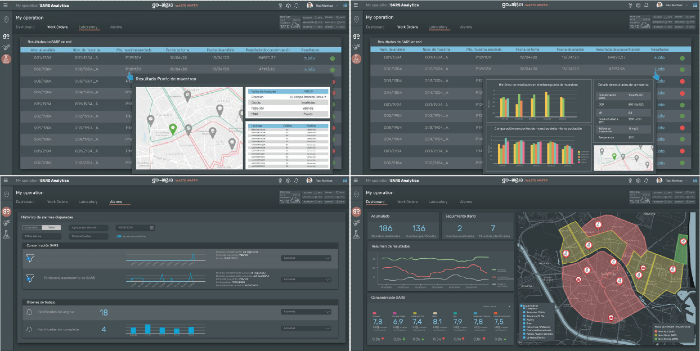
"In Mexico for example, our software combines data analysis and machine learning for leak detection. We are dealing with very important resources, and we are trying to protect and collect and not lose as much water as possible."
GoAigua is also helping the City of Houston optimize the resources allocated to predictive cleaning of the sewer network and reduce sanitary sewer overflows (SSOs) caused by grease and wipe blockages by over 70 per cent.
The AI solution was focused on three key areas:
1. The creation of risk-based preventive maintenance plans for each asset
2. Efficient location of water level sensors
3. Use of predictive analytics for early detection of SSOs.
"As far as I see the possibilities [for Ai] are never-ending," says Fenu.
"I'm excited for the automatic reading of water meters because it is really important to have feedback which is simple, easy and accurate,” she adds.
"Thinking more futuristically, I'd like to see whether prediction systems, which are really good nowadays, can be added into AI water storm overflow predictions."
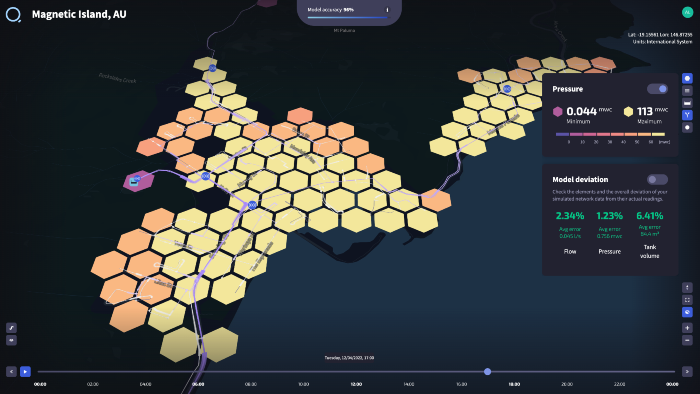
Spanish water management platform powered by AI, Qatium is a web-based application to allow water utilities to better understand their network.
Primarily focused on the operational side of networks it allows operators, and analysts to simulate, run and understand their networks through 'what-if' scenarios.
"What if something goes wrong? There's a burst, there's a leak, you got to resupply an area and give those users who traditionally wouldn't have the technical tools be able to make those decisions themselves without having to refer themselves to an engineer," says Luke Butler, director of innovation at Qatium.
Speaking to Aquatech Online, he says: "These tools to make decisions were held by a slight few who had very specific technical knowledge.
"They were limited on who could use them. People want answers faster and they just need to know they can't have that delay, especially if things are happening in the field.
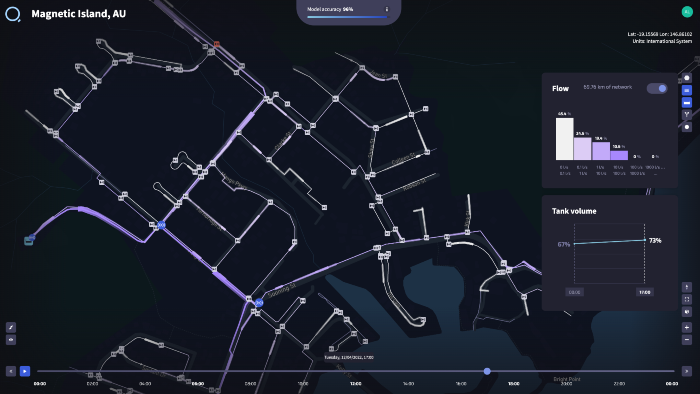
"We are removing that barrier to information, classic data, silos and decisions making and opening it up to the whole organisation so they can discuss their networks."
Qatium offers its user real-time simulations of their water networks with an emphasis on making data accessible to everyone.
It features AI-assisted data management that allows for water networks to be visualised in 3D with GIS data and hydraulic models. Users can analyse their water quality and demand, identify energy savings and lower a utility's carbon footprint.
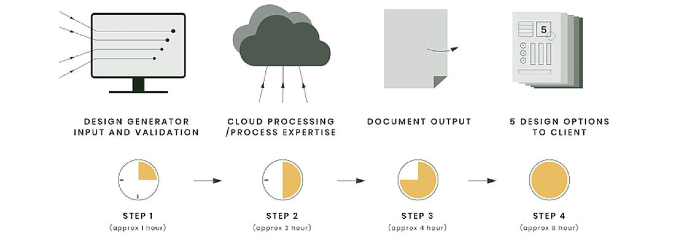
Transcend Design Generator (TDG) is an AI-powered online generative design platform that helps capital planners, project developers, and engineering professionals to generate preliminary engineering designs for water and wastewater treatment facilities.
Tank cites a reference in Texas where the AI tool has proven its worth.
“A utility in Texas recently released a request for proposal (RFP) for a master plan update to a 24MGD wastewater treatment works.
“They were assessing if they should upgrade and/or expand the facility and looking to their responding consulting engineers to assess three potential options that might be feasible.” he says.
"When the utility found out about TDG, they then amended the RFP for their consultants to include thirty different scenarios for what that plant might look like.
“In the same time and budget, the utility now has 10x the number of scenarios evaluated and can assess innovations in treatment technologies, wet weather flow scenarios, population modelling, temperature changes, and regulatory requirements."
TDG uses genetic algorithms specifically in site layout and site arrangements, with the AI automatically finding the best fit given the site's constraints for assets that already exist and need to be built.
“The utility now has 10x the number of scenarios evaluated and can assess innovations in treatment technologies.”
“Many years ago engineers used to cut out physical shapes of clarifiers, blower buildings, and other assets and then manually arrange them on physical blueprints to find the best layout.
“This is a perfect problem for a computer to solve – which is exactly what our software is doing. It's churning through hundreds or thousands of potential site and civil options based on automated process model data & a generated BIM file, and then coming out with the optimal layout for the outcome the utility is looking to accomplish – minimizing site footprint, sustainable design and carbon impact, incorporating innovative treatment technologies, and many more."
Transcend says its AI software tool has designed over 10,000 treatment plants to date.
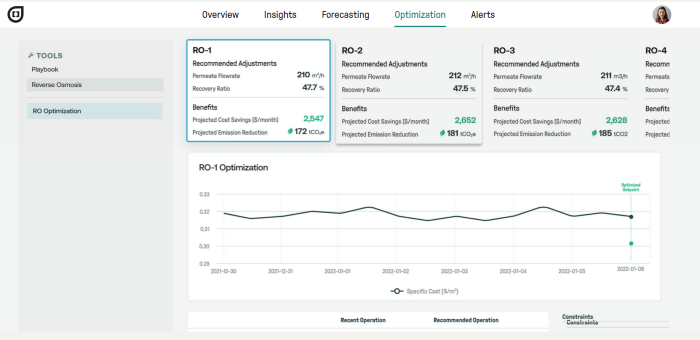
Pani provides a cloud-based machine learning software platform to elevate the efficiency of industrial- and city-scale desalination, water, and wastewater treatment plants. The software-as-a-service (SaaS) company currently offers its platform as a multi-tiered subscription model and can be used in treatment facilities at all levels of digital development.
Called the AI Coach, Pani's system ingests and aggregates data from the plant, then analyses, visualizes, and delivers recommendations to operators to help them optimise a plant's performance, while saving time, resources, and impacts on the environment
“We help companies do more with less,” says Devesh Bharadwaj, CEO of Pani.
Speaking to Aquatech Online, he says: “We do this through what we call process operations AI. Our platform provides end customers with the information they need to make better decisions when it comes to running their plants, identifying optimisation opportunities that also work to reduce risks.”
“The water sector has been traditionally underserved by digital solutions from an operations perspective and it carries forward a hesitation to adopt technologies”
Last year, the Canadian technology company raised $CAD8 million in capital, including a seed equity round co-led by Blue Bear Capital and Blue Coast, along with participation from Mazarine Ventures and Humanitas, and contributions from Sustainable Development Technology Canada (SDTC) and other government agencies.
To date, the organisation has raised $CAD10 million and has grown to over 40 staff, currently serving facilities across the globe in regions that include Asia Pacific, the Middle East, India, and Europe.
More recently Pani helped a large beverage producer in the Middle East improve its water usage ratio by 3.6 per cent between 2020 and 2021 (equal to around 22 million litres in water savings per year).
“This was all done through simply aggregating plant data in the platform and analysing it using artificial intelligence - no retrofits or hardware changes were necessary to deliver these results.
“Our mission is to reduce 0.5 gigatons of greenhouse gas emissions per year by 2032,” says Bharadwaj.
"The water sector has been traditionally underserved by digital solutions from an operations perspective and it carries forward a hesitation to adopt technologies because the value of them seems unclear and remains underappreciated.”
The CEO believes that readily available access to “actionable information” will transform the water sector, accelerating the adoption of more sustainable business practices.
“We see structured data and AI speeding up decision-making processes in supply chain treatment facilities and distribution chains because access to actionable information is now better, faster, and cheaper than it's ever been before,” he adds
“The water sector has an opportunity to lead on the path to decarbonisation through rapid adoption of process operations AI. This type of intelligent data is going to play a huge role in initiating that transition towards improved efficiencies across the entire water treatment sectors.”